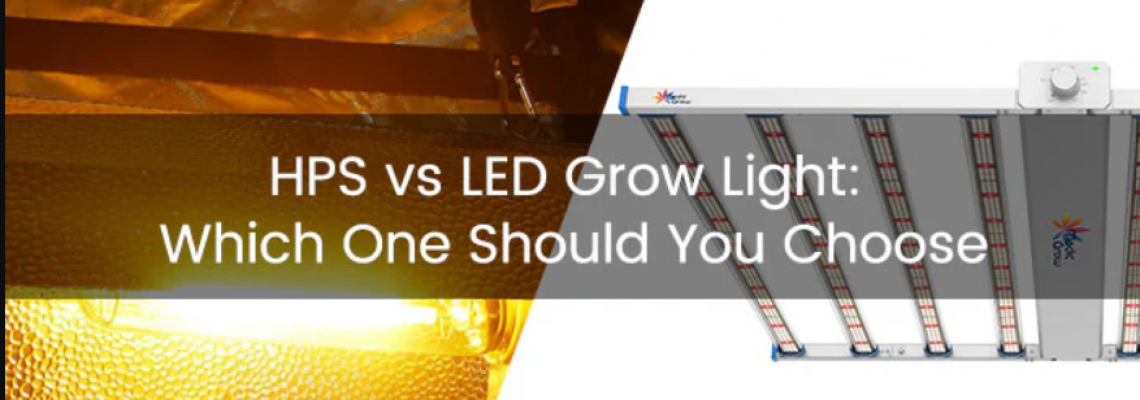
For decades, High-Pressure Sodium (HPS) lights dominated the world of indoor farming and commercial greenhouses. Their strong red-orange output, high intensity, and relatively low upfront cost made them the preferred choice for growers globally. But as agriculture evolves toward precision, sustainability, and data-driven control, HPS is quickly falling behind. Modern cultivation demands more than static lighting it requires adaptability, efficiency, and spectral precision.
Enter dynamic LED lighting, a transformative technology reshaping the future of horticulture. By offering tunable spectra, lower energy consumption, and integration with smart farming systems, LEDs provide growers far more control and consistency than HPS ever could.
In this blog, we’ll explore why static HPS lighting is considered outdated and how dynamic LED solutions empower growers with better performance, healthier crops, and long-term profitability.
1. The Limitations of Static Red-Orange HPS Spectrum
HPS lights are known for their fixed red-orange spectrum, which works well for flowering but falls short for early plant development and full-cycle cultivation. Because HPS lamps cannot change spectrum, growers face several challenges:
✔ Limited Control Over Growth Stages
Plants require different wavelengths at different growth phases.
Blue light promotes compact growth and strong root development.
Red light encourages flowering and fruiting.
Green and far-red influence canopy penetration, stretching, and morphology.
HPS only provides strong red-orange wavelengths, forcing growers to compromise on growth quality.
✔ Poor Vegetative Performance
Because HPS lacks sufficient blue light, plants often grow:
stretched
weak
more susceptible to disease
This leads to inconsistent structure and lower quality yields.
✔ Not Compatible With Precision Agriculture
Modern farms rely on data-driven spectral control. HPS cannot adapt or respond to crop needs, making it unsuitable for today’s high-tech growing environments.
2. Dynamic LED Spectra: Built for Modern Farming
Dynamic LED lighting systems change everything. Their ability to shift the ratio of blue, red, white, UV, and far-red wavelengths makes them incredibly powerful tools for controlled-environment agriculture.
✔ Tunable Light Recipes for Each Growth Stage
With LEDs, growers can adjust the spectrum based on crop type and phase:
Seedlings: Higher blue light
Vegetative: Balanced white + controlled blue
Flowering: Enhanced red and far-red
Finishing: Specific UV ratios for aroma, color, or nutrient density
This level of customization simply isn't possible with HPS.
✔ Higher Yields and Improved Crop Quality
Studies show that dynamic spectrum LEDs can lead to:
denser canopies
stronger stems
higher cannabinoid/terpene levels (for specialty crops)
improved flavor and nutrient content (for leafy greens and fruits)
LEDs don’t just grow plants—they optimize them.
✔ Real-Time Adjustments = Precision Cultivation
LED spectra can be automated and fine-tuned using:
sensors
timers
climate control systems
crop-specific algorithms
This ensures consistent results across harvest cycles, giving growers predictable quality and output.
3. Energy Efficiency: One of HPS’s Biggest Weaknesses
HPS lamps convert much of their energy into heat, not usable light. This inefficiency drives up power bills dramatically.
✔ HPS = High Heat, High Cost
Excess heat from HPS requires:
heavy ventilation
air conditioning
dehumidifiers
This increases electricity usage and operating expenses.
✔ LEDs = Cooler Operation & Lower Bills
Dynamic LED systems generate far less heat, meaning growers save money on both lighting and HVAC. Over time, operating cost reductions make LEDs more cost-effective—even if their upfront price is higher.
4. Longevity and Maintenance: LEDs Last Much Longer
HPS bulbs degrade quickly. Their light output drops significantly within months, requiring frequent replacements.
HPS Lifespan Concerns:
Bulbs need replacement every 6–12 months
Ballasts require periodic maintenance
Spectrum shifts unpredictably as bulbs age
LED Advantages:
50,000–100,000+ hour lifespan
Minimal maintenance
Stable spectrum and intensity over the years
This long-term reliability reduces labor, materials, and downtime.
5. Safety & Environmental Impact: LEDs Lead the Way
HPS Safety Concerns:
High surface temperatures
Fire hazards
Fragile glass components
Mercury inside bulbs
Improper disposal of HPS lamps poses serious environmental risks.
LED Advantages:
Mercury-free
Lower fire risk
Cooler operation
Durable and shatter-resistant
LEDs are the more sustainable, eco-friendly choice.
6. Compatibility With Smart Farming & IoT
Modern agriculture is heading toward automation, and LEDs are designed to fit right in.
LEDs Integrate With:
cloud-based grow platforms
mobile apps
data logging tools
AI-driven light control
climate automation systems
HPS, with its single spectrum and analog design, cannot be automated in meaningful ways.
7. Tailored Spectra for Specific Crops
Different species thrive under different light environments. With LEDs, growers can adjust recipes for:
leafy greens
herbs
strawberries
cannabis
microgreens
tomatoes
ornamentals
HPS simply cannot replicate crop-specific outcomes.
8. ROI: LEDs Pay for Themselves
Although HPS systems are cheaper upfront, they end up costing more over time due to:
high electricity consumption
frequent bulb replacements
cooling requirements
reduced yield per watt
Dynamic LEDs, conversely, deliver significant long-term savings. For most commercial farms, LEDs pay for themselves within 1–3 years through operational efficiency alone.
Conclusion: The Future Belongs to Dynamic LEDs
Static HPS lighting had its place in the past, but farming has changed. Today’s growers require precision, sustainability, automation, and consistent crop quality—needs that HPS simply cannot meet.
Dynamic LED systems offer:
tunable wavelengths
higher efficiency
longer lifespan
lower operating costs
compatibility with smart farming
superior crop performance
For growers aiming to stay competitive in modern agriculture, switching to LEDs isn’t just an upgrade; it’s a future-proof investment.

Leave a Comment